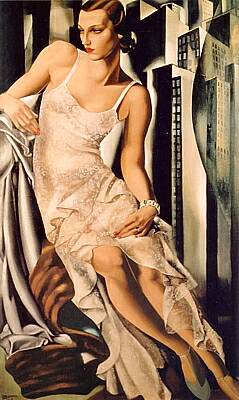Ten years ago, when Tamara de Lempicka’s Adam and Eve (1931) was sold at auction for almost $2 million to a Hollywood notable who preferred to remain anonymous, Newsweek ran an article under the headline “Who’s right about Lempicka, the critics or the movie stars?” The Royal Academy’s new exhibition, the first retrospective of the artist’s work in this country, entitled “Tamara de Lempicka: Art Deco Icon”, inevitably raises the same question. The majority of the works on display have been borrowed from private collections, many from Beverly Hills. Jack Nicholson has been a notably generous lender. The perfumier Wolfgang Joop and the designer Donna Karan have also played a conspicuous part in making this show possible.
It is not difficult to see why the slick and knowingly disengaged portraits and nudes that de Lempicka painted during the 1920s and 1930s – the ne plus ultra of Art Deco painting – should appeal as they do to celebrities and image-makers. They resemble painted distillations of the ideal of celebrity itself, seductive images of human beings who have transcended the confines of merely mortal existence to enter a world of cool, sharp, steely spectacle. Posed against schematic backdrops – often, as in Adam and Eve, a crystalline monochromatic vision of a modern city, all jagged skyscrapers and tower blocks – the people whom de Lempicka paints seem as angular and untouchable as their urban surroundings. The artist perfected the flesh of her sitters to a metallic sheen and removed almost every trace of emotion, bar a certain world-weary air of melancholy, from their faces. Her paintings are like a recurring dream of perfect inviolability, of being able to move through life as if it were a set rather than reality, assuming perfect pose after perfect pose, like a succession of...

Tamara de Lempicka: Art Deco Diva at the Royal Academy 2004
30-11-1999

